Quilting on a sewing machine: what is it and what can be sewn?
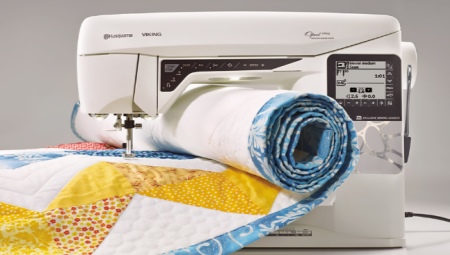
Quilting and patchwork are often confused in needlework. We can say that these are related types of creativity, because both of them involve the compilation of a patchwork mosaic. A popular direction of quilting is a technique that does not do without a sewing machine.
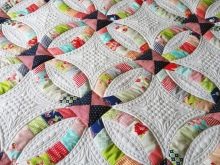
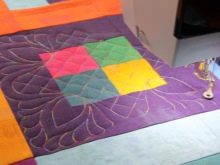
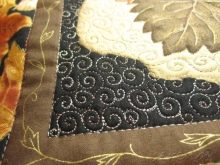
What it is?
Quilting on a sewing machine is usually called sewing a volumetric pattern (abstract, geometric).
Quilt is represented by three obligatory layers:
- upper decorating layer;
- second made with a volume-forming gasket - usually a synthetic winterizer;
- third layer - bottom lining fabric.
This structure is often referred to as a sandwich structure. The upper decorative part does not have to be made of shreds... Even in one color it is attractive, because the whole pattern is created by sewing - machine-sewn stitches.
The main element of this technique is machine embroidery, while the patchwork design is optional.
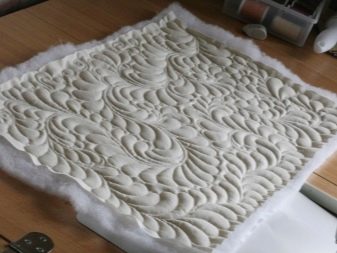
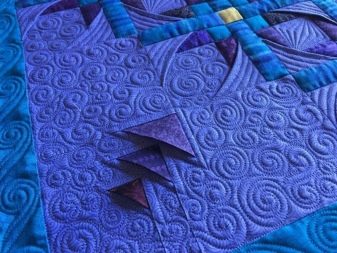
The technique has a number of features.
- Due to padding polyester (or other filler), you can adjust the volume and texture of the picture. If the filler is quilted, the pattern will come out wavy, if not, the product will be smooth, but with volume.
- The face layer in quilting on a sewing machine can be considered the main one. It depends on it how the product will look in the end. Certainly, a patchwork fabric with machine embroidery looks more effective than a plain one. But both options can be interesting and technologically advanced.
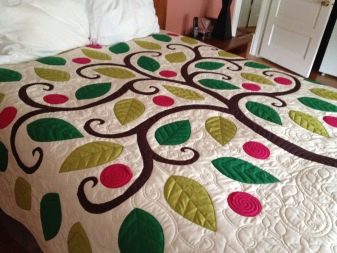
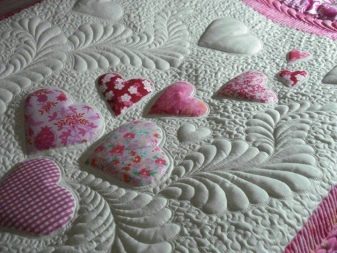
For beginners, this technique is suitable if you already have experience working with a sewing machine. No need to choose complex patterns right away: it is recommended to start with straight lines, which are perfectly quilted on a typewriter along a ruler.
Using templates is a constant practice in quilting, and they can be very different.
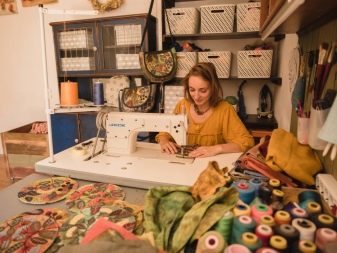
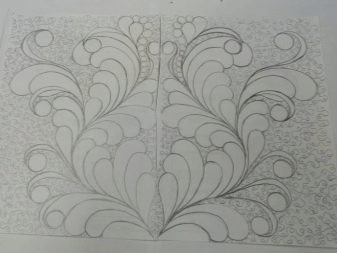
Overview of current stitches
A traditional quilting stitch is considered a seam "forward to the needle", but for quilting on a sewing machine, several other interesting options have been created.
- Straight seams will form parallel or intersecting straight lines.
- Wavy seams more decorative. When used in conjunction with patchwork, it is mainly for background organization.
- Sinuous (fantasy) - in machine quilting, this is a free-running seam, in which the quilting is performed in different directions, which creates a unique free pattern.
- Quilted grill - the best option for making bedspreads. In order for it to be correct, it is necessary to pre-mark at one interval throughout the entire product.
- Curved seam creates rounded elements - in quilting on a sewing machine, these are, for example, leaves and feathers.
- Contour seam positioned along the edges of the image. It looks great, made with ribbons, however, you cannot do without a hoop for making this seam.
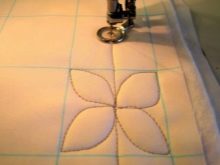

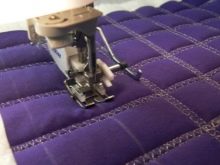
First you need to practice making different stitches on a separate piece of fabric. And only after training, when the seams are confidently obtained, you can proceed to decorating the product.
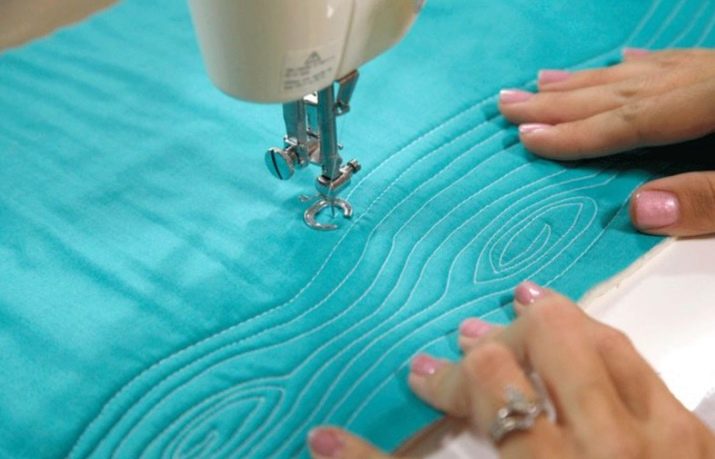
Main directions
The two most striking trends in quilting are Japanese and Celtic. In the Japanese technique, a distinctive feature is the stitches that connect the fabric layers and allow you to make interesting ornaments and patterns on ready-made things.... Mainly natural subjects are used as motives. The product may additionally have an applique. Fringe and tassels are often used to decorate Japanese products.
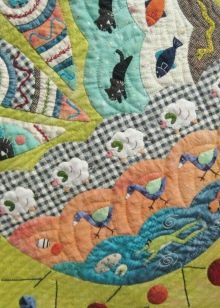
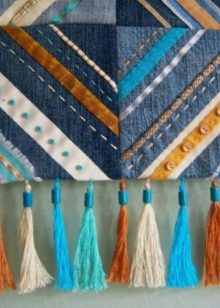
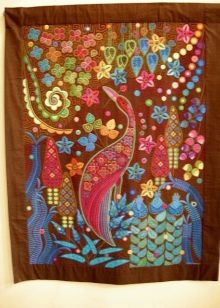
Celtic quilting is not as difficult as Japanese, but it cannot be denied originality... In its construction, the principles of symmetry and mirroring of colorful curls resembling plant stems are clearly observed. It has a lot of vibrant colors and geometry in patterns.
One of the recognizable elements of the direction is the Celtic knot - this is the name of the bias inlay applique, which is laid according to the pattern on the top layer.
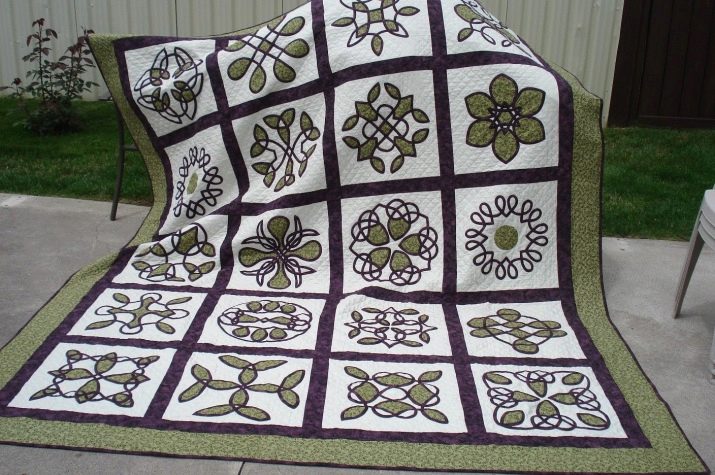
There are several technological "tricks".
- It is easier to sew the desired element if you first draw it on the fabric with a pencil (you can also use chalk).
- To keep the patterns neat, the canvas that no longer fits under the foot should lie on the floor or on the table in an organized manner. But you shouldn't keep the fabric on your knees - a little twitching can get lost in the embroidery.
- On large items, embroidery almost always starts from the center - this makes it easier and faster to arrange the elements of the pattern according to the scheme.
- The machine reverse stitching helps to finish the job delicately by masking the reinforcement of the threads.
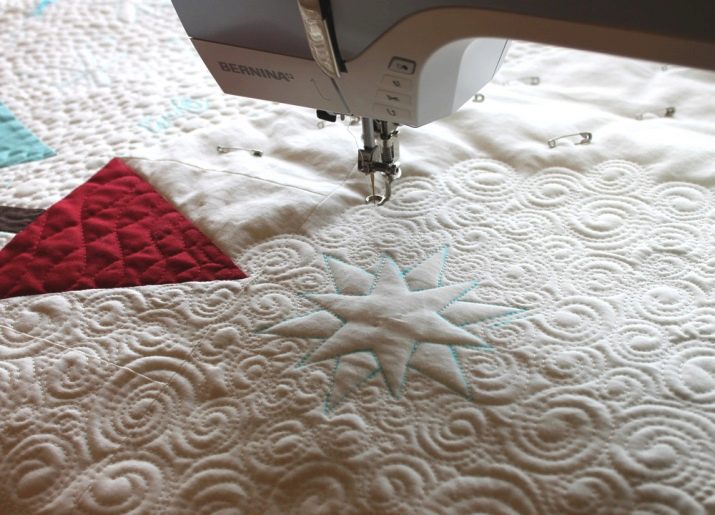
Tools and materials
The handicraft store will surely have everything that a craftswoman needs to make a quilting product. The main material, of course, is fabric.
The cotton material is optimal and easy to work with. Only first, the fabric needs to be washed so that it shrinks.
100% cotton is very comfortable to work with, but blended fabrics are also worth considering. The latter wrinkle less, wear out less quickly and remain attractive longer.

Consider what else you need.
- Roller knife... Much more convenient than scissors, speeds up the process. It is sharper and more accurate than scissors.
- Cutting mat... You cannot do without it if you decide to take quilting seriously. It can be used to practice operating the roller knife.
- Transparent squares and rulers, patterns - all this helps the needlewoman to make markings of patterns on the fabric.
- Plain pencils (preferably soft) convenient in making templates, they can also be useful in transferring a pattern to fabric.
- Needles and pins... For quilting (even machine), a short and strong needle with a sharp end will not be superfluous.
- Thread... These should be high-quality threads that do not fade, do not change color when washed, and do not paint over the fabric.
The main tool in this type of quilting is a sewing machine.
If it already exists, you need to explore its capabilities. And if you just have to buy a typewriter, useful advice should not be ignored.
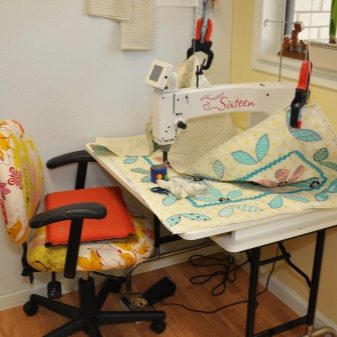
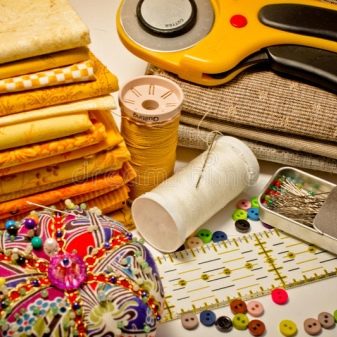
How to choose the best car?
Machine quilting helps the garment become flatter and stitch tighter and more secure. You can use a regular typewriter, but for professional purposes it is worth looking at equipment with advanced functions and additional types of stitches... For example, if the presser foot in the machine rises by 14 mm, this greatly simplifies the work of the needlewoman.
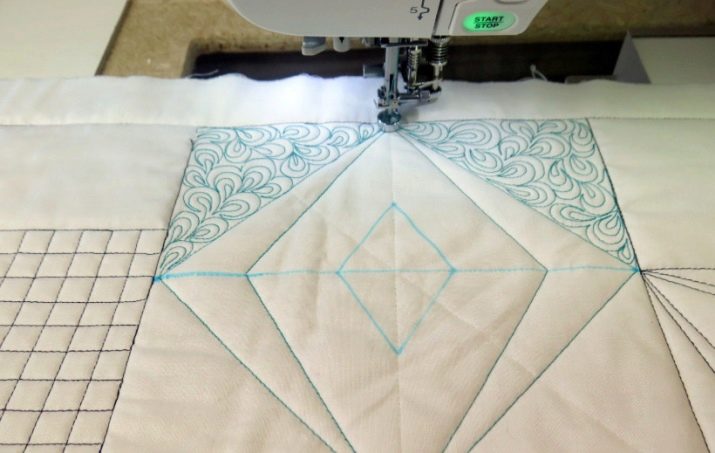
The most popular are two brands of cars.
- Quilters Companion (Janome)... This is the most famous equipment for quilting, it even comes with a set of comfortable legs. Computerized machines are also produced that make 60 lines, and the zigzag width in them can reach 7 cm.
- Bernina... The Swiss model with a special foot keeps the stitch length constant, even if the feed speed of the fabric changes. Some models of the brand have 180 variations of stitches and have almost 2 dozen stitches just for quilting.
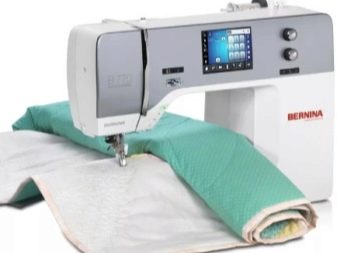

In machines on which you can professionally do quilting, there is, for example, an enlarged platform - this makes it easier to quilt large things. There may also be an auxiliary table in the package. And it will also be convenient for the craftswoman to set the sewing speed herself. If the machine has an automatic needle threader, this is very convenient - when quilting, you often have to change threads.
Cover, interchangeable feet, top feed, automatic stitch length adjuster - all this is a good addition to the modern machine.
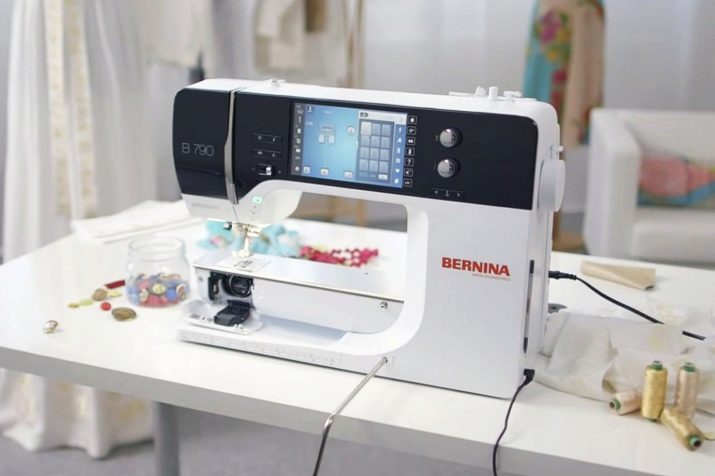
What can be sewn?
The first thing that comes to mind of every needlewoman who wants to do machine quilting is making bedspreads, blankets, blankets, pillows. And bedding (if you can call them that), indeed, are the main reference point for the masters. From beautiful scraps of natural fabrics (almost always this way), a solid canvas with interesting patterns is obtained.
Quilt is an opportunity to make the interior warmer, brighter, add cute accents to it.
Scandinavian style, boho, rustic - everything will be the perfect basis for quilting products.
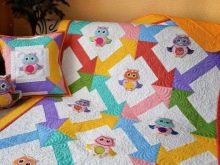
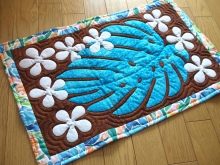
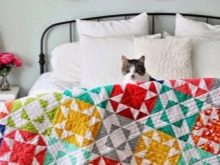
What else can be sewn:
- light coats and vests;
- bags (it is very convenient to walk with a stroller with such textile bags);
- pillows in the car;
- kitchen bench covers;
- various kitchen accessories (oven mitts, kettle warmers, lunch mats);
- rugs (and wall mats too);
- interior toys.
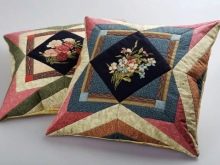
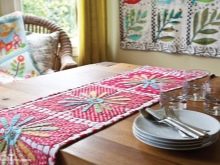
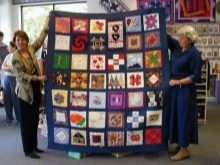
You can realize yourself not only as a home decorator, but also become an artisan. There is always a buyer for handmade, if you correctly present such a beautiful and cozy art as quilting.
In the next video, you will learn how to choose the right sewing machine for your quilting.


